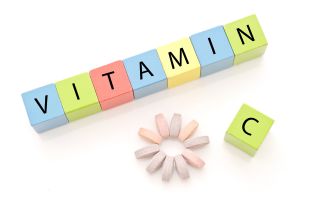
Sometimes it is easy to become so enamored of the latest and greatest high-tech supplement that we forget about the basics. That is unfortunate because those fundamentals may be even more important to our health and are often less expensive. For example, we miss out if humble vitamin C is under-appreciated and under-used.
During our May 28th interview with Bill Sardi, he discussed renewed research about the role of our old friend vitamin C in fighting our old enemy, cancer. That is heavy lifting indeed, but there are a number of more routine uses for vitamin C.
- The effects of aging. Even though it was an animal study, it is very interesting that vitamin C was found to be rejuvenating and even helped repair DNA damage. It is noteworthy that mice have the ability to make their own vitamin C (we cannot), but apparently adding even more helped. STUDY
- Endometriosis. This is a serious condition especially affecting women of reproductive age. In an animal study, supplemental vitamin C significantly reduced problems with experimentally induced endometriosis. STUDY
- Others: There are many other vitamin C benefits supported by science: athletic performance, bronchitis, colds, fragile capillaries, glaucoma, gum disease, high cholesterol, infertility, sore throat, stress, and wound healing…I could go on but you get the idea.
How much vitamin C is enough?
It is a challenge even for a nutritionist to sort out the government’s various guidelines: “Recommended Dietary Allowances (RDAs)”, “Adequate Intakes (AIs)”, “Daily Value (DV)” and “Dietary Reference Intakes (DRIs)”. Even if we figure out which one to use, I have little to no faith in the numbers. That is because the goal of the guides is to prevent deficiency diseases—not to optimize health. Also, they do not reflect our unique biochemical differences. Besides the government’s long-standing built-in bias against supplements, there is political pressure to specify low amounts because the guidelines influence public policy. That said, these experts do come closer to getting it right in their recommendations for minerals than they do with vitamins.
The DV for vitamin C is a mere 60 mg and that includes what is in food. For example, that is about the amount in an orange. At that level at least we won’t likely get scurvy, that ancient sailor’s disease. Bill Sardi wrote an interesting article on how effective very high amounts of vitamin C can be for treating cancer. What treats cancer naturally may well be preventive. Considering that and the above benefits of C, it might be smart to take more than 60 mg. Many nutritionists that I know recommend 500 mg twice a day because the vitamin is water soluble and flushes out of the body.
- Recent research showed that 75 mg a day was not sufficient to maintain what is considered “adequate” blood levels. STUDY
- But, what about the risk of kidney stones? End stage kidney disease patients on dialysis did not seem to have an increased risk of stones, even with vitamin C at blood levels expected to be therapeutic for healing wounds and forming red blood cells. Note: those levels may be 3 to 4 times more than what is considered “adequate”. STUDY










 June 16, 2016
June 16, 2016 
What form of vitamin C is best?
They are all helpful. I always liked a mix with bioflavonoids. I now add some of the fat soluble form, Ascorbyl Palmitate.